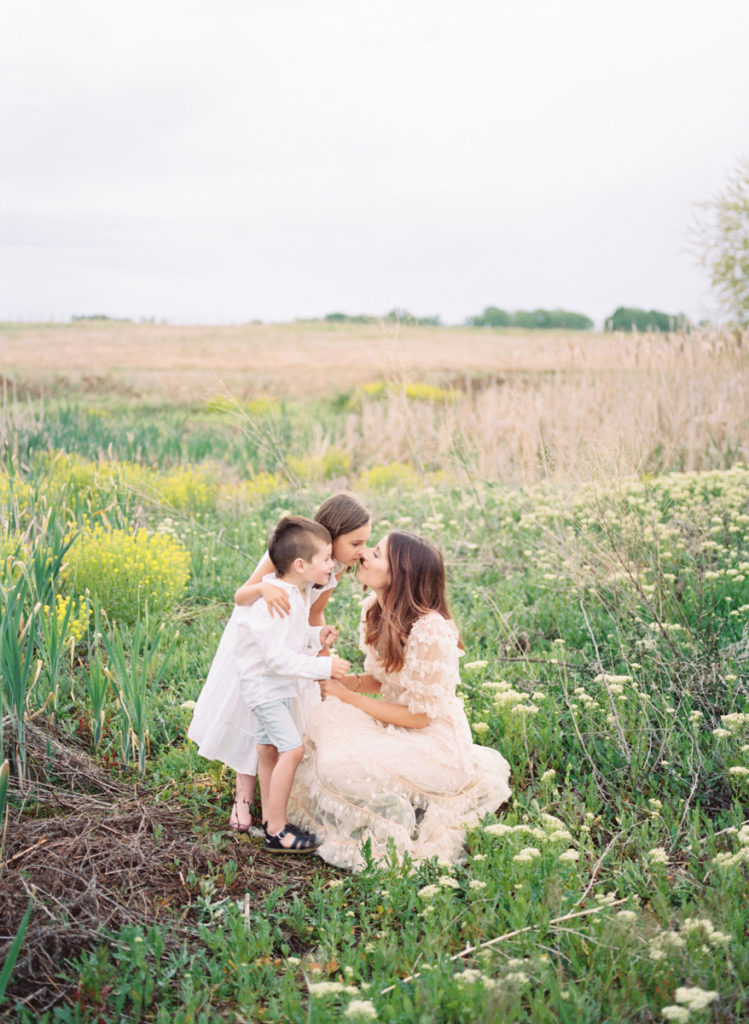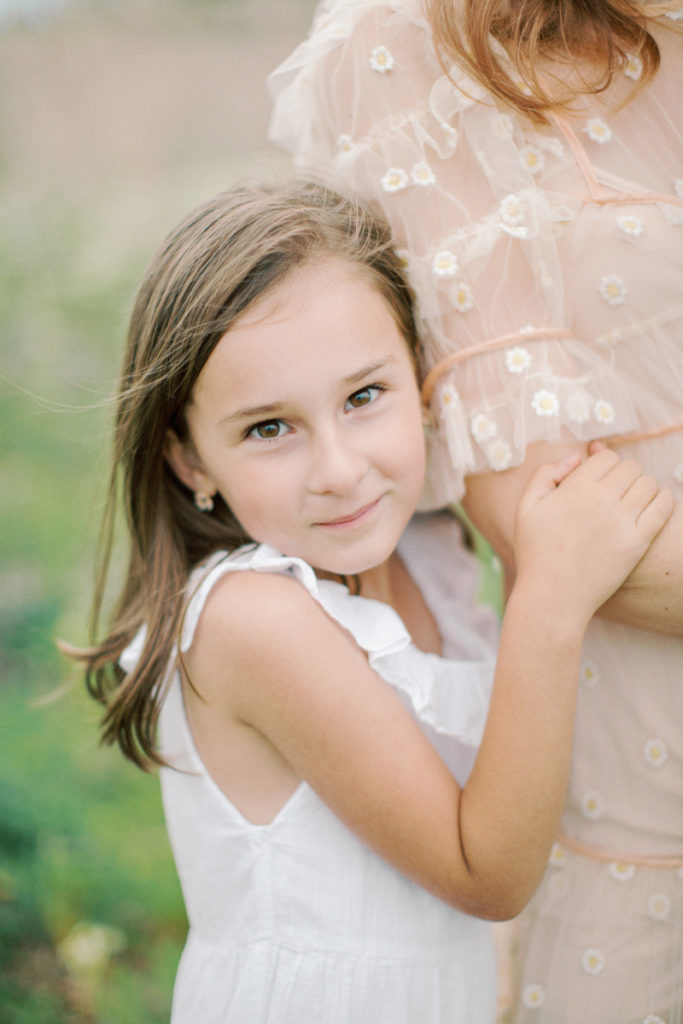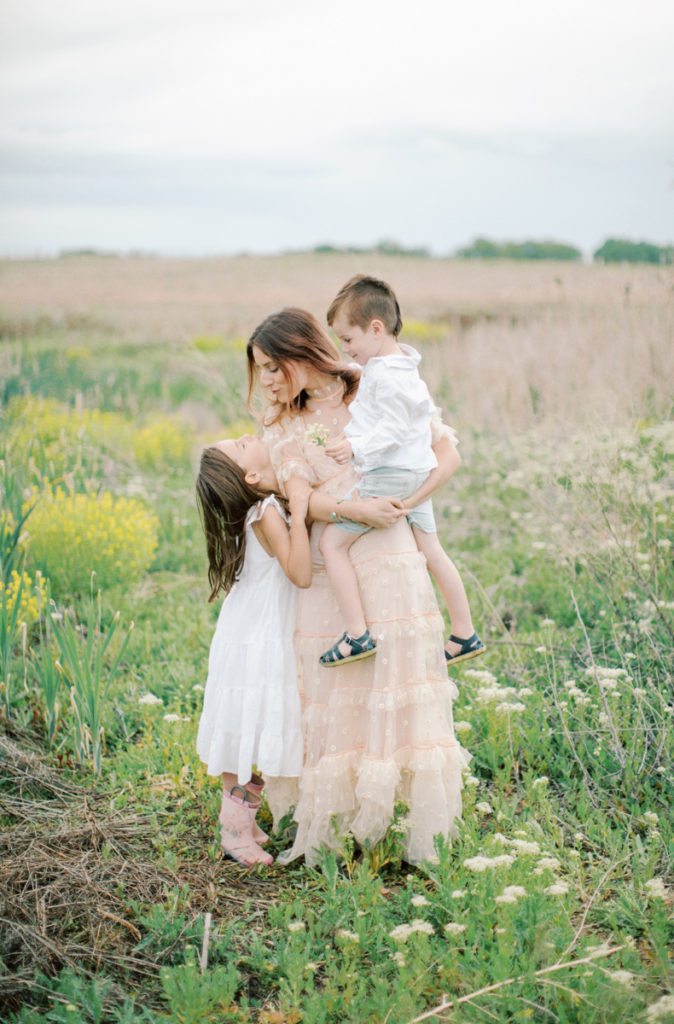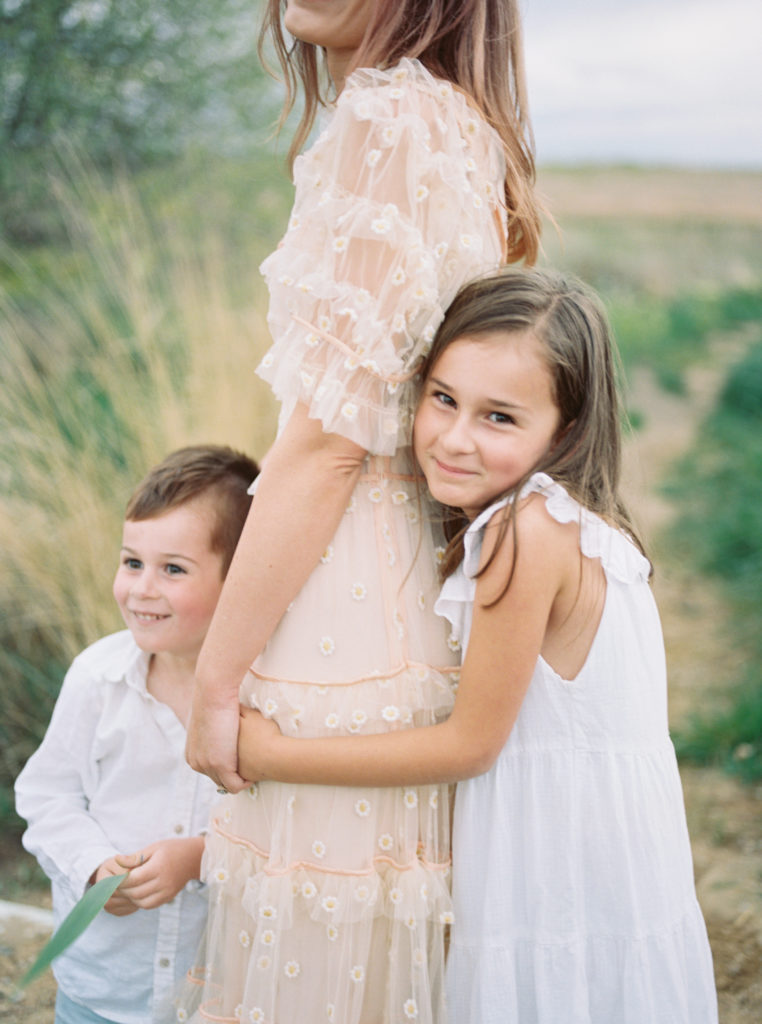Hybrid Family Photography: how to incorporate film into your family and newborn sessions.


This is an educational article for photographers about hybrid family photography. If you’re a client looking for a photographer, click here!
Shooting hybrid (both film and digital) is one of the single best things I have done for myself as an artist, and I am so excited to share more on this topic! You’ll be getting lots of my opinions in this post, and I hope you always remember that you don’t have to share my opinions and that you should do things the way that feels right to you. I am going to be breaking this post into two parts, because there is so much I have to say about it.
Part one is going to cover the pros and cons of film versus digital, and why I shoot hybrid, plus the one drawback to it. If you haven’t yet started shooting film but have been interested in it, or if you’ve started diving in but are worrying that you “need” to be shooting all or almost all film, well, part one is packed full of incredible information for you! Understanding what film and digital each offer is such a major factor in deciding if and when you should incorporate film – after all, there should be a bigger purpose in shooting film beyond the fact that it’s “cool” right now. Next, part two will cover how to actually shoot hybrid for a smooth session flow, and when I choose to use film versus digital. So here we go, part one!
Pros and Cons of Film and Digital | Hybrid Family Photography
I personally shoot hybrid, which means I shoot a mix of film and digital at every session. I honestly never, ever see myself shooting all (or even majority) film, for several reasons that I will go into shortly. And yet incorporating film into each session has transformed how I shoot and edit and I would never dream of going back!Film and digital are both integral to my business, because they each offer unique and wonderful benefits.
Film pros:
- Incredible skin tones + colors. Film, when exposed properly, just looks so good.
- The subtle texture that every film shooter is obsessed with, and that can never quite be replicated. Film can elevate a simple image to become beautiful. Vague, I know, but this is true!
- It forces intentionality in shooting, rather than firing off a bunch of frames and hoping one turns out. This benefit can carry over into your digital shooting as well!
- Film handles harsh light so much more beautifully than digital does. It retains detail in the highlights where digital totally loses it.
- Medium format cameras can be pricey; however, 35mm cameras can be extremely inexpensive. I shoot with a 35mm Canon model that fits my favorite Canon lenses that I use on my digital, and I paid under $50 for the camera!
- Film requires much less editing time! I get premium scans from Photovision, which means that I don’t need to edit my film scans at all unless I want to make minor adjustments. They have already been scanned for incredible skin tones and other preferences I have set up with my lab beforehand, and they look consistent from image to image. I often make a few very minor changes, but editing time is absolutely much less with film than digital.
Film cons:
- Film can be really difficult in low light – even shooting indoors with decent light typically requires a 1/60 shutter speed at f2.8, which is typically too slow for moving subjects like children. And film typically looks pretty blah when it’s underexposed at all.
- Scans can’t be edited nearly as much as a raw digital image. So if your film is underexposed, you can’t simply brighten it up in Lightroom and move along – the shadows will be muddy, skin tones will be bland, and the whole image will lack contrast and life and all the things we love about film. Or if your shot was severely overexposed, all of the colors will go a little wonky and, again, it won’t be something you can simply fix in Lightroom. Film must be exposed well in the first place, or it’s just not going to look great.
- It’s not ideal for really squirrelly children when you might need multiple frames to get a shot that you really want. Between the cost per frame (outlined below), and the fact that film cameras are older and often have very slow autofocus or are manual focus only, it’s much trickier to keep up with wild little ones.*
- It’s expensive! Meaning, really expensive. Between the cost of a roll (on average $10-$14 for a professional roll, sometimes more and occasionally you’ll find it for less), the cost of shipping to your lab (not expensive on its own, but it adds up since film has to be shipping frequently), and the processing itself (the cost varies a lot depending on your lab and your scan preferences, but $18 is a fairly average price per roll), you can see that it adds up quickly. For example, let’s say I shot two rolls of medium format Portra400, at the film prices I saw today at several retailers: $23 for two rolls + $5 shipping (at a minimum, typically more) + $36 to process two rolls = $64. That $64 gives me only 32 photos, which means that I am spending $2 for each photo that I take. That’s an investment! Obviously 35mm film is less expensive per photo because there are many more photos per roll, while the per roll cost of film and processing stay relatively similar. But it still adds up quickly.
*I do want to note that if you are working with adults only, having the speed of a digital camera becomes much less important. But I primarily photograph families, so the importance of keeping up with squirmy children is super important to me.
Digital pros:
- There is no cost per frame. Particularly when you’re working with children, it pays off enormously to be able to take a few frames close together in order to nail a shot.
- Professional digital cameras handle low light amazingly. These days, a good digital camera can be set to a very high ISO and still produce high quality images with very little noise.
- Most digital cameras now have very quick autofocus and it’s really easy to keep up with fast-moving subjects.
- Raw images have so much data to edit from, which leaves you a lot of flexibility in post-processing. (Blown highlights are the exception – there’s no recovering a digital image that’s really blown.)
- It offers instant feedback, which can be incredibly helpful for so many reasons. Being able to check your image immediately is a huge perk!
Digital cons:
- Digital generally lacks that ‘something more’ that photographers shoot film for. Adding grain to a digital photo never quite replicates the texture of film, or the feeling of nostalgia that can’t quite be explained.
- Many photographers struggle with editing consistently throughout a session or getting great skin tones. I also see a lot of photographers striving for the ‘light and airy film aesthetic,’ but who are accidentally just overexposing their digital images and washing them out. I would say this is the single biggest drawback to shooting digital: beautiful and consistent edits can be so hard to achieve, but it’s an absolutely essential part of delivering great photos to your clients. Thankfully, digital can also look stunningly beautiful, and the right editing skills can even make your digital look pretty darn close to film! There are many sessions that I edit, and afterward I can’t tell the difference between most of my film and digital images. I’ve worked at perfecting this for years, and will definitely be talking more about my process in the future!
- Digital can look very mediocre in harsh light, and it’s much harder to get a pretty image when you want to use front light or dappled light because of how easily highlights can be blown.
One more thing I would also like to acknowledge is that there is a little bit of an attitude that has developed around film, like it’s the better/cooler/more authentic way to photograph. I won’t lie and say that I don’t kind of love using an old camera and feeling connected to the origins of photography, but I also am not into snobbery in the slightest. No photo is better simply because it was shot with film – a good image is a good image is a good image, regardless of the medium that was used to create it. And there are plenty of bad photos taken on film, too. 😉 I believe that shooting film can make you a better photographer because it forces you to slow down and shoot with intention, and it also helps give you an eye for good skin tones and how to edit photos well. But it is absolutely not the only way to be a fantastic photographer.
This list isn’t comprehensive, and you might find an additional pro or con to add to it. Regardless, understanding these pros and cons is such an important part of making the decision about whether or not to shoot film, and then when to shoot film versus digital.
Why I Shoot Hybrid
Did you notice that film and digital have almost the exact opposite strengths and weaknesses? For example, where film excels in harsh light but struggles in low light, digital struggles in harsh light but handles low light beautifully. The fact that these pros and cons lists are so comprehensive and that film and digital complement each other so perfectly is exactly why I LOVE shooting hybrid: I get the best of both worlds.
- I get the nostalgia and texture and fantastic skin tones that film offers, and I have a set of beautiful and consistent scans from each session to guide my editing and keep it totally on track.
- I can capture beautiful images in overly bright light (a big deal when our summer sunset time is nearly 10pm and kids have to be in bed long before golden hour).
- I have the speed and freedom to keep up with busy, wild children and make sure that I am getting precisely the photos that I want to deliver, not ones with awkward facial expressions or movements because too many subjects just didn’t stop moving.
- My images still look great in darker homes or low light just after sunset, when film is just too slow to use how I want to use it.
- My overhead cost is much lower than it would be if I were shooting 100% film.
I love that shooting hybrid allows me to never compromise on quality in any way. Digital and film are both fantastic mediums, and I appreciate each of them so much for what they offer.
The One Drawback to Hybrid Family Photography & Why it Shouldn’t Concern You
Now, here comes the one drawback to shooting hybrid: editing to match your digital images to your scans. Yes, I freely acknowledge that this can be tricky and potentially add some time to your editing. But once you get the hang of it, it is not difficult and is 100% worth it! I can’t go into a deep dive on editing in this post, but I know that matching scans is a highly requested topic and an educational guide on editing and matching scans is on my list of items to add to my shop!
I promise that matching scans isn’t as complicated as you might fear, and what’s more, it really doesn’t need to be perfect! As I say this, I have to acknowledge that I am personally a major perfectionist about my scans and digitals matching, and after I edit a session I typically cannot tell the difference between most of my images. But it doesn’t have to be that way, as long as the gallery as a whole looks cohesive. And remember, clients are also going to be much less critical about looking at the details of how each color is rendered or the texture of the shadows. Aim for the entire gallery to work together, rather than obsessing over making a digital and film image look exactly the same. Or obsess if you want, I suppose, since I do and always will. 😉
With time, I’ve learned that I’m going to be making certain tweaks to essentially every gallery, so that piece isn’t remotely time consuming anymore. And while matching scans might add a little time to my editing, in theory, I actually think it keeps me so focused on what my edits should look like that it ultimately saves me time. How many of us have spent far too long settling on our favorite look as we start to edit a session? It can be really hard to decide what version is best, and it becomes a big time suck. But once I have my film scans, I know exactly what my digital edits should look like, and there’s no debating or trying something different. Matching scans removes the guesswork, and I know that my tones will look incredible!
Alright, friends, that’s it for part one. If you have questions for me, reply to this email and let me know what I can answer for you. And if you’re interested in diving into film and want beautiful results from the beginning instead of wasting time guessing and experimenting, I would love to be able to mentor you. Film is one of my most popular mentorship topics, and for good reason – it is pretty confusing when you’re first starting out! But I promise that it’s easier than you might fear, and also incredibly rewarding.
And keep your eyes open for part two next week!


Hybrid Family Photography | Incorporating film into your sessions, by Hannah Mann
I’m Hannah: a photography educator with a passion for transformative education. I believe in your talents and potential even more than you might believe in them. Really! I believe in you because I know that being a successful photographer isn’t about being born with the right skills, but about getting your hands on the right education.
And that, friend, is what you’ll find here.
+ Comments